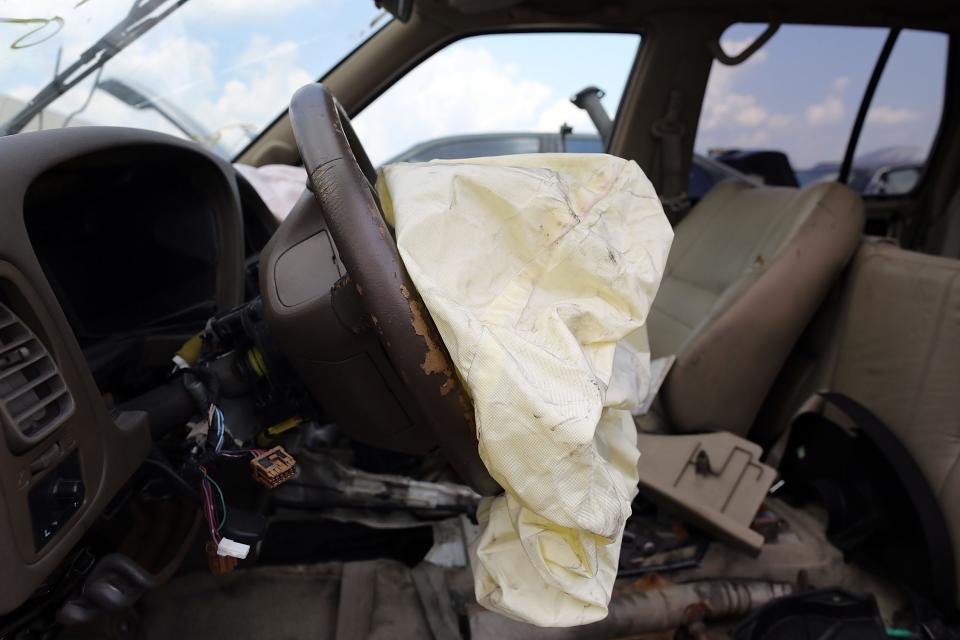Got an old car? Afraid to buy a new car? Here's how to keep your "beater" on the road.
The average American car is a dozen years old, and getting older.
Many consumers are balking at buying automobiles, new or used. Prices hover near historic highs. Auto-loan interest rates have soared.
But a well-tended car or truck can last longer than ever, maintenance experts say. The secret is, well, maintenance.
“The 100,000-mile marker, and the idea that the vehicle’s value is going to fall off a cliff, that the engine is going to grenade itself, none of that is true anymore,” said Ivan Drury, director of insights at Edmunds, the automotive consumer site.
The average age of America’s automobile fleet reached 12.5 years in 2023, and the figure has crept up for six straight years, according to S&P Global Mobility.
Sales slowed in the pandemic, first because of supply chain kinks and, more recently, over soaring prices and interest rates.

New vehicles cost $48,451 in August, on average, according to Kelley Blue Book. That compares with $38,635 just three years ago. Used vehicles sold for an average of $29,472 in the second quarter of 2023, according to Edmunds, a 46% increase over the same time in 2018.
New car customers now face an average interest rate of 7.8% on a five-year loan, according to the Federal Reserve. As recently as February 2022, the figure was 4.5%.
How do I keep my car on the road?
Suddenly, that 12-year-old car is looking more attractive.
“The best car is one that’s safe, meets your needs – and is paid off,” said Matt Degen, a senior editor at Kelley Blue Book.
Degen’s personal car is a 2002. In theory, he said, there’s no reason why a car built in 2011 can’t last until 2031.
Cars and trucks are more durable now than in prior generations. Many cars that rolled off the assembly line in 1973 were ready for the junkyard by 1983. Millennial cars are so superior to their ancestors, in so many ways, that they can easily live twice that long.
“Today’s cars are built well,” Degen said. “For proof of this, look at some of the warranties,” which guarantee the vehicle’s propulsion system for as long as 10 years or 100,000 miles, milestones that would have spelled death for many cars in the old days. “That’s a big confidence in their vehicles.”
But that wisdom presumes the owner has read the manual, followed the maintenance schedule and acted on every pop and ping emitting from under the hood.
What if you haven’t?
Here are some tips for the negligent car owner. It’s never too late to extend your car’s life, experts say, even as it enters its difficult teens. This list draws from the automotive experts quoted and from David Bennett, senior automotive manager at AAA.
Read your car maintenance schedule
Dig out your yellowing manual or, if it's long gone, find it online. Locate the maintenance schedule. Look for things you haven’t done. (YouTubers can also help with this.) Changing the oil every few months is easy enough. The maintenance schedule will list less obvious and less frequent repairs.
Many items, like tires, air filters and brake pads, will come up in a routine inspection. Others might not. One is the dreaded timing belt, a complex component whose failure, suffice to say, will throw your car’s engine into disarray.
Pay for a good vehicle inspection
Most mechanics offer some sort of multi-point inspection, a service that will yield a punch list of items for repair or replacement. It’s a great way to play catchup with a neglected vehicle.
An inspection might cost between $100 and $200. Some mechanics will apply the cost toward any needed repairs.
Prioritize
Once you have a list of potential fixes, set a budget. Put the repairs in order. Top priority should go to basic safety: any part whose failure might cause you to spin off the road, like brakes or tires. After that, fix parts whose failure would strand you on the roadside. Aesthetic repairs come last.
“Yeah, you’ve got a little dent in the fender, but that doesn’t affect how the car drives,” said Michael Crossen, an automotive technician at Consumer Reports. “Fixing the radio static should not be the priority when the car needs tires and brakes.”
Do I really need all that insurance? When to drop collision and comprehensive insurance
Don’t blanch at the bill
A thorough inspection of a neglected, decade-old car might yield a list of urgent fixes that cost $2,000. Weigh that against the expense of replacing the vehicle.
“At today’s new prices and payments, that’s maybe three months of payments? Maybe two months?” Degen said. “And, guess what? You’ve got 60 more payments.”

Check for recalls
Look up your aging car on a database of industry recalls. Recalls can pile up. Some affect millions of vehicles. If you need motivation, read up on the Takata airbag recall, the largest such safety action in history.
Dealers typically fix recalled items at their own expense.
Deal with problems as they arise
Don’t let maintenance issues pile up. Over time, small repairs can become big ones.
“That way, you don’t have a car that’s 12 years old and you have a hundred things that need to be fixed,” Crossen said.
When the list of repairs gets too long: How to get cash for junk cars
Drive the car
Movement matters for older cars, just like for older people. Bad things can happen to a car’s moving parts when they don’t move. If you don’t use a vehicle regularly, take it out for a half-hour drive at regular intervals.
“You know how, when you get older, you get kind of creaky when you get out of bed?” Degen said. "Well, that’s your car if it’s older."
Do your own inspections
Once a month, take a good, long look at your older vehicle. Kick the tires. Check windows for cracks. See that the accessories are working as they should. Check any fluids, filters and hoses that you can find. Look for loose parts.
Wash and wax
Washing an old car’s exterior preserves the finish. Detailing the interior is a good way to preserve aging parts, and to spot broken ones.
“People forget that maintenance isn’t just what’s in that book,” Drury said. “Anything you push, pull, crank, anything you touch on the car, can fail.”
In the end, having a clean car is about more than the car.
“There really is a nice psychological effect when you walk out your door and you see a nice, shiny car,” Crossen said. “You open the door and it smells nice.”
This article originally appeared on USA TODAY: America's cars are older than ever. Here's how to keep yours running.

 money
money 